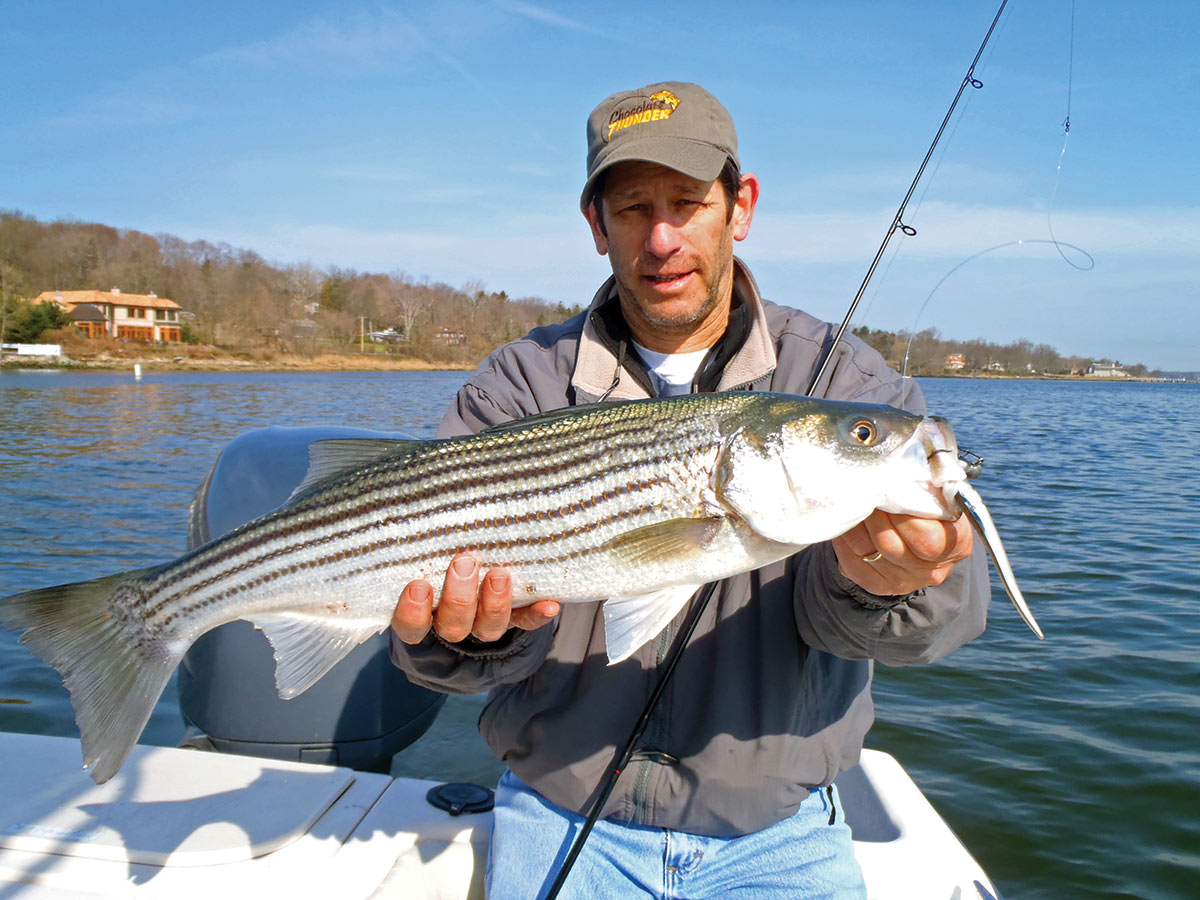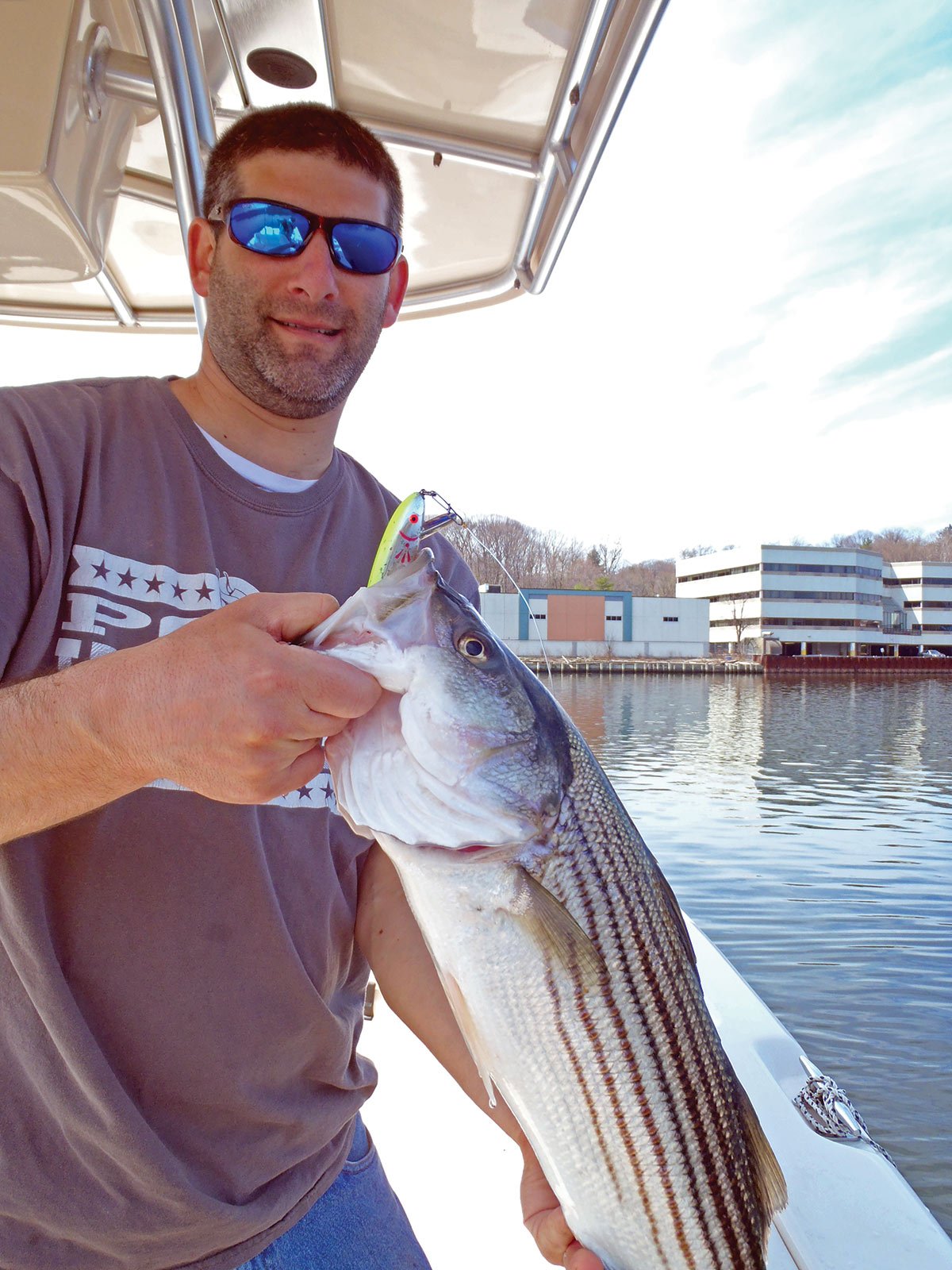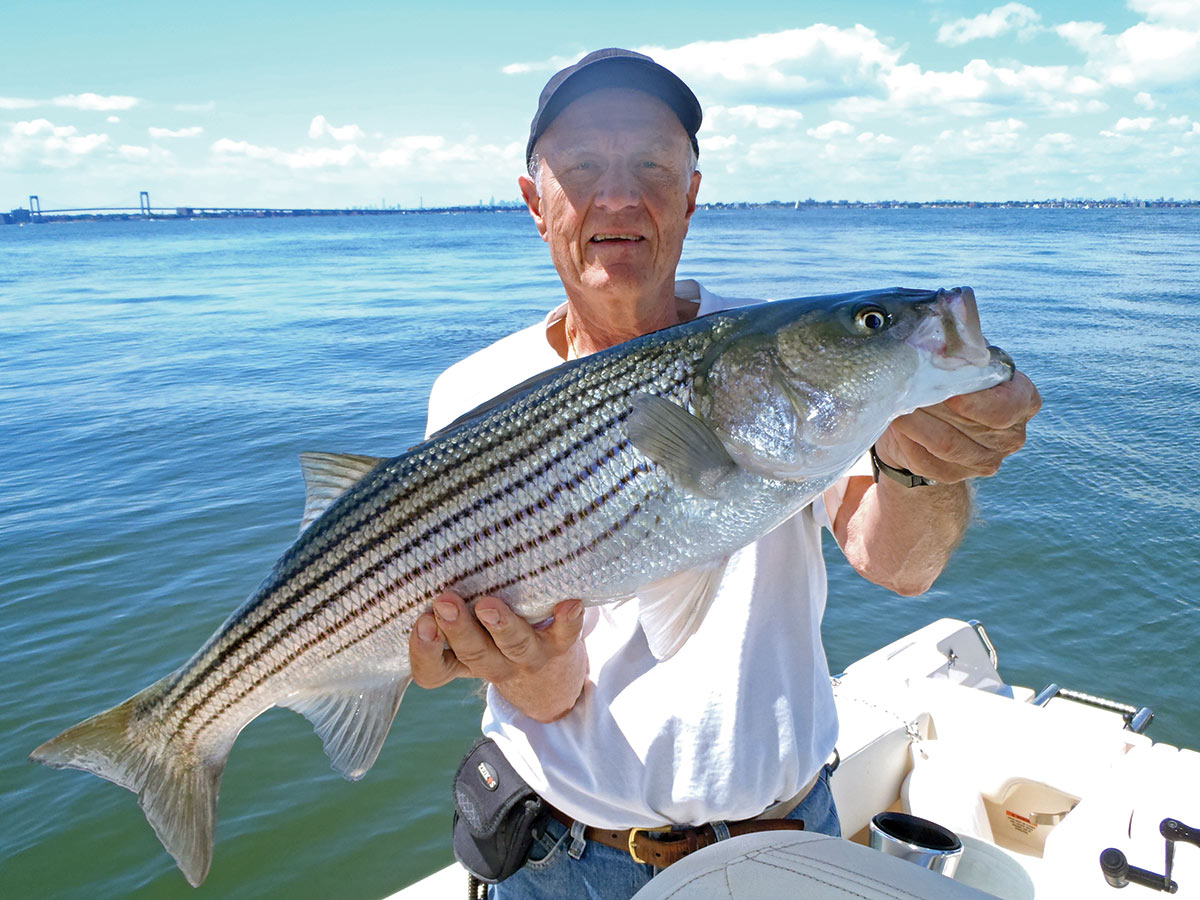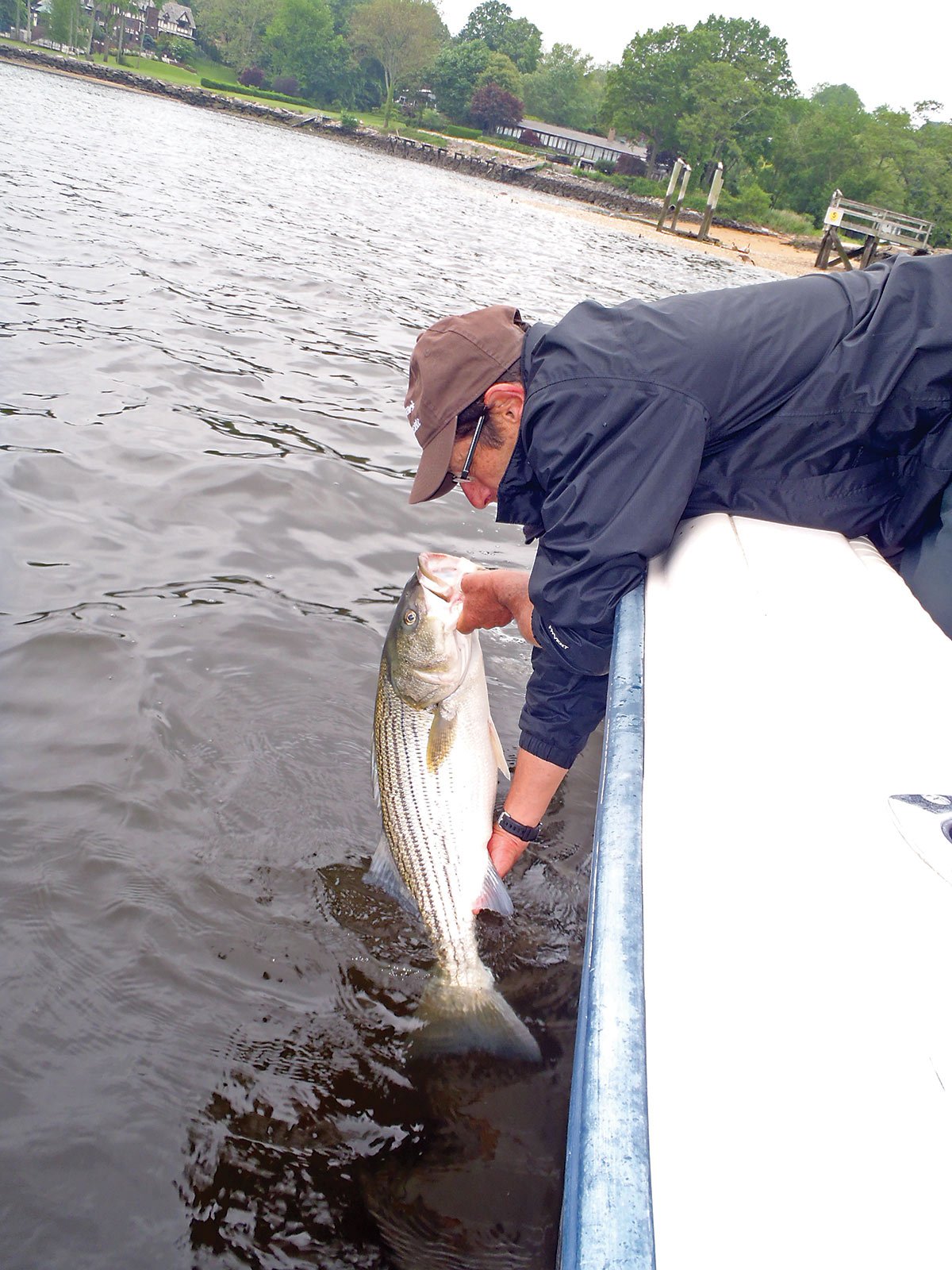
Decoding most of our gamefish is becoming a specialized angling endeavor and developing the skill to do it can pay big dividends.
I remember the mid-1970s and mid-1990s fondly, not because I became rich, famous, or a teen idol, because I didn’t, but because these were four-year periods in each decade when sand eel spawns were huge. By May there weren’t just schools of sand eels, there were rivers of the skinny critters along the beaches and depth recorders showed dense schools off the beaches, too. Those years, by no accident, featured great fishing because sand eels make the early season go. In fact, abundant spring sand eels set the stage for good fishing throughout the season.
Here’s how it works. In our area, the entire animal part of the marine aquatic food chain is dependent upon on sand eels for success. As the season begins, the only way we can hold our share of migrating predators in our waters is if we have large amounts of bait. Otherwise, stripers migrate east and then north until they find lots of food, and that means they usually settle off Massachusetts for the summer. Similarly, many schools of bluefish bypass us and head north. So, in years with poor sand eel spawns, the food chain is stymied, and anglers experience fewer fluke, squid, blues, weakfish, and stripers. The opposite is true when spawns are very large. Two- to 3-inch sand eels move inshore in spring, predators find them quickly, and the bait abundance stalls the northward migration. The first to arrive inshore are nearby Hudson River stripers that have wintered in Long Island Sound’s deep areas. Then as waters warm, shoals of squid move inshore from the ocean and gorge on them. By mid-May, abundant squid and sand eels attract large schools of fluke into the Sound, and as the season moves into June shoals of bait also hold bluefish and weakfish. That’s how we get truly good fishing all season: both boat and shore.
Not Recently
Although there are big schools of small stripers around, huge schools won’t accumulate if there aren’t huge bait schools to support them. In truth, we are overdue for a big-time sand eel spawn in Long Island Sound, and have been for some time. Yes, there have been modest spawns recently, but not enough to get the spring engine revving at high rpm. Since sand eels are the fuel for our fishing engine, neither spring fluking nor striper fishing has been stupendous in Long Island Sound. Sure, there are always scattered good catches, but no reliable solid runs of fish. A lack of reliable runs has certainly been true for Rich Lazar and me fishing in Little Neck and Manhasset bays. Whereas once we made long drifts in the bay moving in and out of striper schools, now we must decode what we see, hear, and smell in order to succeed. We also notice how important it is to fish as often as possible in order to establish whatever patterns may exist during the spring run. Therefore, the question remains, how do we decode these fish?
Patterns First
Although I don’t travel west to fish with Rich every day, he manages to get out most days and that provides him with a solid perspective on where the fish and sand eel schools are hanging out most of the time. The perspective also includes information about how they are feeding. Clearly, when bait is abundant more predators gather, which makes them more competitive, and they feed with more authority. For sure, that means hits are hard. On the other hand, when sand eel schools are sparse, stripers spread out to hunt, they cruise more slowly, have more time to examine a lure, and hits are often unimpressive. In fact, what many of us call “missed hits or bumps” may actually be tails slaps and head butts because, with less competition, the fish intuitively find our offerings a little off. Don’t laugh at this. As a surfcaster in still, clear, calm water I’ve watched stripers, with mouths closed, head butt a lure and disappear. Likewise, for tail slaps. If an angler pays even a little attention to how fish are hitting, he/she comes away with a better understanding of when fish are “hot” and when they are not.
Watch That Lure

Understanding feeding patterns is important, but so is getting a grip on preferred baits. You might think that any good sand eel imitation will work well, but unfortunately that isn’t always true. For reasons known only to the bass, some days they attack anything similar to sand eels, and other days they are fussy about shape, color, and/or length. When fish are spread out, little things make a big difference. Then there’s the lesson I learned decades ago while trying to fool fussy fish. The moral of that lesson was to choose smaller lures and retrieve more slowly. Okay, each spring Rich and I begin with 3/4-ounce bucktails, 5-inch soft plastics, and small tins because those lures seem to work most of the time. But if the fish only bump a lure, we submit to the fish rather than hold our ground stubbornly. We follow the moral of the lesson and change to smaller lures. Unfortunately, many small lead heads come with weaker hooks. Yes, bumps become hook-ups, but lurking in the harbor and sometimes mixed in with small fish are larger ones. Consider an experience we had last spring. We found a school of 12- to 16-inch stripers and were catching them steadily on 3/8-ounce leadheads with 3-inch soft plastics, and it was a blast. However, then I got a hard hit, I set the hook, and the fish took off. I knew it was a bigger fish. My first thought was about the weak hook on my leadhead and whetheritwould stand up to a fish that ultimately weighed 13 pounds. I loosened the drag and bowed to the fish when it ran. However, if you aren’t expecting a bigger fish it’s difficult to react before the fish straightens the hook. We have proven again and again that the combination of smaller baits and ultralight tackle catches more fish when stripers and sand eels are scattered, but we needed to do something about the weak hooks. A little searching on the Internet yielded many better choices, and we replaced our weak hook leadheads with ones equipped with forged steel hooks.
Winds
Wind patterns need to be decoded, too. Strong winds are always the bane of boat anglers, but in springtime different wind conditions can affect fishing both negatively and positively. Most parts of most estuaries have a lot of weed in spring that grows rapidly. In recent decades there has been slip-gut and other brown algal blooms, in addition to the more traditional Ulva (sea lettuce) that’s been around in spring since the great flood. As a result, a strong wind from almost any direction can, if weed is thick, lift it off the bottom, blow it around, and play havoc with the fishing experience. Strong winds also push boats and lines around, making boat control and line control difficult. Erratic boat control may be nothing more than a nuisance when using 1-ounce leadheads and pencils retrieved at a moderate speed because they “grab” the water better, but it’s a big problem when casting light lures with very thin lines. So, in a significant spring wind when small stripers are spread out, seaweed is suspended, and fish are feeding leisurely and with a fussy attitude, the best decision is often to stay home.
On the other hand, in certain parts of our inshore waters, weeds may not be a problem, in which case a good blow from the “right” direction could present us with an advantage. Specifically, when seaweeds are absent, there’s a stiff breeze from a beneficial direction, and a good fetch, the wind may create a current. At those times, bait may pile up onto a shoreline down-wind where a school of stripers may pin them to the beach and feed. Not only does the wind concentrate bait and stripers, but also creates cover for shallow feeding stripers by creating a disturbed surface and wave generated noise.

Moon Tides
In most harbors I prefer to fish the lower stages of tides because bait has fewer places to hide and is pulled out into the open. Furthermore, moon tides may enhance the magnitude of low tide, and in most harbors do not produce strong currents that might inhibit the use of light lures. Since bait will be pulled into smaller and smaller pockets of water, competition usually increases, and a good bite can develop. However, bright sun and calm winds often convert fish into fussy eaters in the shallows, and may cause them to move into nearby deeper spots. On the contrary, on cloudy days stripers may feel more secure in shallow pockets and the bite may be enhanced.
Don’t Give Up in Sunshine

Even if sunshine and calm discourage stripers from setting up an all-out blitz is shallow spots, there is still a decoding option available. Typically, bait will remain shallow even when stripers depart. In this case, the start of the incoming tide might witness a hot bite. Most fish are more interested in whether water is dropping and how quickly it does so rather than the absolute depth. Fast tides, sunshine, and low tides tend to make them skedaddle out of the shallows quickly, whereas slowly dropping water seems to encourage them to stay a bit longer. Therefore, spots with bait and no fish may turn on as the tide starts to flood. Since the depth is steadily increasing, it creates a sense of safety and stripers move quickly from deeper spots back into the shallow pockets. That brings us back to the patterns section earlier in the article. One reason I encourage anglers to fish close to home is because doing so allows for more frequent trips, and that tends to make patterns more obvious. Thus, the moon tide/deep in the harbor behavior of fish becomes apparent if you explore the area frequently. An angler may come to understand that between the moons when tides are not extreme, fishing the last of the ebb may be the best bite, and that the first of the flood tide might be the best choice during moon tides. Decoding the unique aspects of your back-yard watering holes is easier simply because you’ll likely fish them more often.
Windows
In recent decades and in most places, bites have become shorter and shorter. So short in fact, that productive periods may last only 20 minutes to about an hour. Of course, there are exceptions such as the fall when packs of predators gather together to hunt shoals of migrating bait. This “gathering of eagles” promotes lots of competition and “bites” become longer and more intense. However, with these few exceptions aside, windows of opportunity are short for most of the year. What does this mean? It means that local anglers who know local patterns have a chance to get onto those patterns and catch fish. The occasional angler on the other hand, may by accident fish the other 23 hours of the day and catch nothing while local sharpies fishing for an hour catch 20 fish. Truly, more and more, decoding most of our gamefish is becoming a specialized angling endeavor, but developing a method and skill at doing it can pay big dividends.



